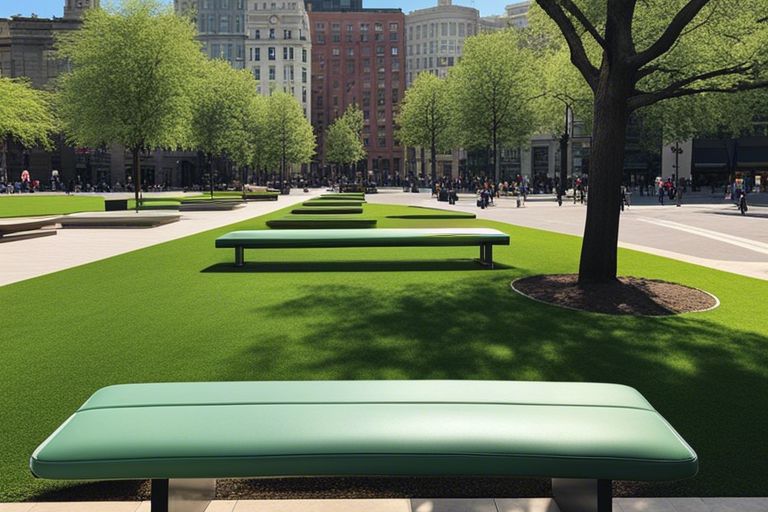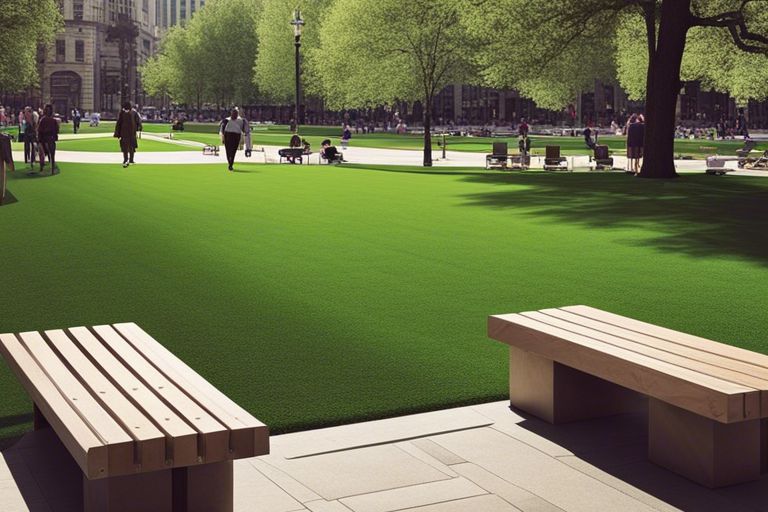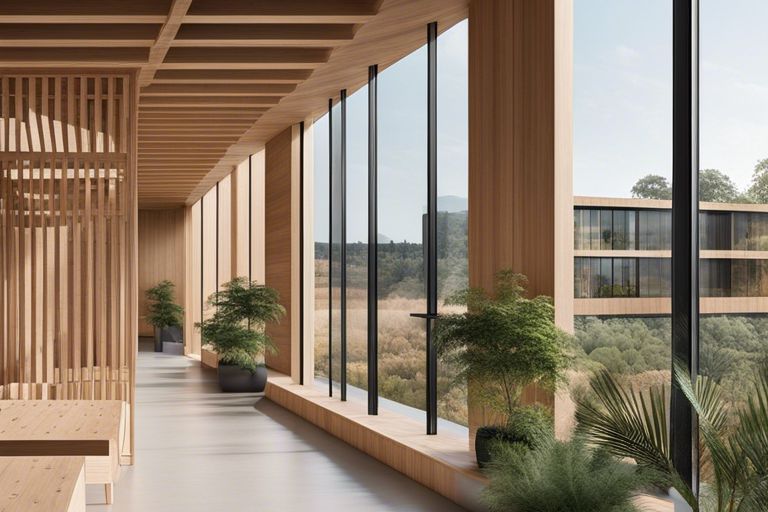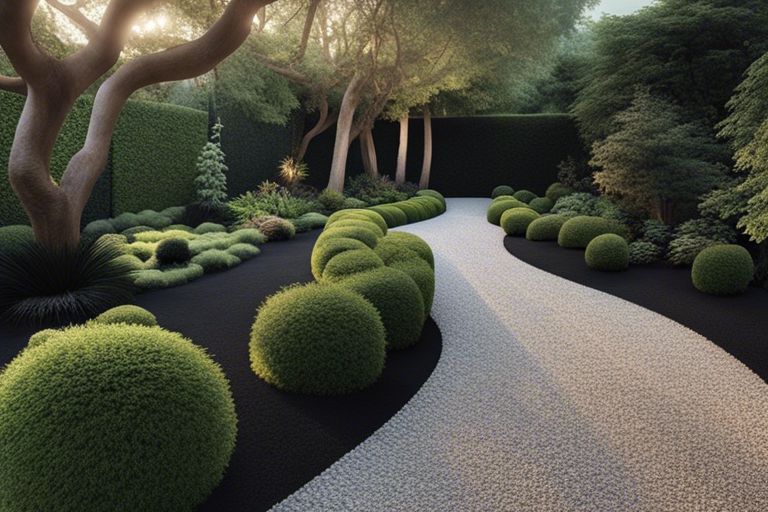Over the years, urban green spaces have become important for enhancing environmental quality and promoting mental well-being. This blog post explores whether grass in a landscaper’s roll is the quintimportant solution for designing these valuable areas. You might ponder the numerous advantages, such as immediate aesthetic appeal and the reduction of urban heat islands, alongside potential challenges like maintenance concerns and the ecological impact. Join us as we probe into the practicality and benefits of rolling out lush green expanses in your urban landscape.
Key Takeaways:
- Convenience: Grass in a landscaper’s roll offers an easy and quick solution for establishing green spaces in urban environments, making it an ideal choice for both professionals and homeowners.
- Aesthetic Appeal: This method allows for immediate visual impact, transforming dull, concrete-heavy areas into lush landscapes that enhance the overall beauty of urban settings.
- Environmental Benefits: Installing rolled grass contributes to improved air quality, reduced urban heat, and increased biodiversity, thus playing a vital role in sustainable urban development.
The Urban Green Space Conundrum
The Importance of Green Spaces in Urban Areas
Any time you stroll through a bustling city, the contrast between concrete jungles and verdant havens becomes undeniably apparent. Green spaces are not merely aesthetic enhancements; they serve as crucial lungs for urban environments, providing imperative oxygen while absorbing harmful pollutants. They act as sanctuaries for both wildlife and humans, offering a respite from the frenetic pace of city life. Moreover, studies have shown that exposure to greenery can significantly reduce stress levels and enhance overall well-being, proving that the value of these spaces transcends mere beauty.
In addition to their health benefits, green spaces contribute to community cohesion by serving as gathering spots for social interaction and recreation. They provide opportunities for civic engagement and cultural activities, fostering a sense of belonging among residents. In essence, you are not merely participating in urban life; you are enriching it when you engage with these verdant pockets. The importance of such areas cannot be understated, as they not only beautify your surroundings but also underpin the social fabric of urban communities.
The Challenges of Maintaining Urban Green Spaces
For many urban planners and local governments, the maintenance of green spaces poses an array of formidable challenges. With rising populations and competing land-use demands, finding room for parks and gardens becomes increasingly difficult. You may notice that in some cities, green spaces are sacrificed in favor of new developments or infrastructure projects, leading to a significant reduction in these vital areas. Financial constraints also play a role, as budget cuts often lead to the neglect of these spaces, which can lead to a decline in their overall health and functionality.
Spaces that are improperly maintained can quickly become overrun with weeds, litter, and hazards, transforming them from sanctuaries into unattractive and potentially unsafe locales. This invites poor public perception, which can reduce community usage and, paradoxically, lead to further neglect. The vicious cycle illustrates a painful truth: without commitment and strategic planning, even the most well-intentioned green spaces can fall prey to urban decay. You may find yourself questioning the balance between progress and preservation as you navigate the intricate web of urban planning, pondering which side will ultimately shape the future of your city’s green landscape.
The Role of Grass in Urban Landscaping
One of the most critical aspects of urban landscaping is the incorporation of grass, which serves multiple purposes in enhancing the ecological and aesthetic fabric of cities. Through well-planned green spaces, you can utilize grass to not only beautify your surroundings but also create a sense of community and relaxation. This approach aligns with the ideas presented in Lawns in Cities: From a Globalised Urban Green Space …, highlighting how globalized aesthetics can find their home in your local environment.
The Aesthetic Appeal of Grass
Role in urban landscaping is often associated with the visual and sensory experiences that grass provides. A lush green expanse can transform a concrete jungle into a serene oasis, where you can find solace amidst the hustle and bustle. The vibrant hues and textures of grass create dynamic landscapes that can change with the seasons, giving your outdoor spaces a sense of life and movement. Furthermore, grass invites you and your community to engage with nature, making it an indispensable element in urban design.
However, it is not just about beauty. The presence of grass contributes to a sense of belonging and identity within urban settings. When you stroll through parks, the soft underfoot and greenery can evoke feelings of nostalgia and tranquility. This sense of attachment to green spaces often encourages stewardship among residents, fostering a shared responsibility for maintaining these vital areas.
The Environmental Benefits of Grass
The environmental impact of grass in urban areas cannot be overstated. You may find it surprising that grass plays a significant role in mitigating urban heat. It has the amazing ability to cool down surrounding air, thus lowering ambient temperatures during hot summer months. This natural cooling effect not only makes outdoor spaces more enjoyable but also helps reduce the energy consumption of nearby buildings by lessening the need for air conditioning. In addition, grass serves as a natural filter, effectively absorbing stormwater runoff and improving the quality of water that eventually reaches local waterways.
Another critical aspect of grass is its ability to improve air quality. Grasslands absorb carbon dioxide while releasing oxygen, forming a crucial component of urban ecosystems. The proliferation of green spaces allows you to breathe easier and enhances your overall health. Furthermore, grass can act as a habitat for various species, promoting biodiversity even in densely populated areas. Therefore, choosing to incorporate grass in your urban landscaping is not only an aesthetic choice but also a vital contribution to a healthier environment.
The Quintcrucial Solution?
Your quest for a verdant oasis amidst the concrete jungle often leads you to ponder various options. Among these, grass in a landscaper’s roll emerges as a formidable contender, offering a symphony of aesthetic beauty and ecological benefits. You may find that investing in this lush green solution is not only visually pleasing but also an astute decision for enhancing your urban landscape. By laying down rolls of grass, you can create a natural environment that harmonizes with the urban ethos while nurturing a thriving ecosystem right at your doorstep.
The Advantages of Grass in Landscaper’s Rolls
With grass in landscaper’s rolls, your landscaping efforts become remarkably efficient. Unlike traditional methods that demand extensive time and labor, these pre-grown rolls roll out like an instant carpet of life. You can effectively minimize soil erosion and combat the heat island effect so prevalent in city landscapes. Moreover, the convenience of laying down these rolls means that you can achieve that coveted instantaneous lushness, as compared with the protracted wait for traditional sowing methods to culminate in a green expanse.
Additionally, the ecological advantages are not to be understated. You will find that grass in rolls provides a habitat for diverse species, promoting biodiversity in urban settings. This living blanket also plays a crucial role in purifying the air and improving soil quality as they flourish, making it an ideal solution for those who aspire to merge nature with urban living.
The Convenience Factor
Convenience is perhaps the most pertinent factor when considering grass in landscaper’s rolls. Instead of the labor-intensive process of seeding, which often entails preparing the soil, worrying about weather conditions, and managing irrigation schedules, you can simply lay down ready-to-go grass rolls. This not only saves you time and effort but also ensures that your outdoor space looks immaculate without the typical waiting period associated with growing grass from seed.
The transformative convenience extends beyond installation; it significantly reduces the learning curve often experienced by novices in gardening. The uniformity of grass rolls translates to less maintenance and a more polished appearance, which you will undoubtedly appreciate. After all, your urban green space should be a sanctuary of relaxation, not a source of stress and anxiety. Choosing grass in a landscaper’s roll invites simplicity, allowing you to focus on enjoying your green haven rather than tending to it with laborious undertakings.

Addressing the Drawbacks
After exploring the myriad benefits of grass in a landscaper’s roll, it is imperative to address the drawbacks that accompany this verdant solution. While lush green spaces are undeniably attractive, they come with challenges that can negate some of their aesthetic appeal. Understanding these drawbacks allows you to make informed decisions when considering grass as a component of urban green spaces.
The High Maintenance Requirements of Grass
An undeniable characteristic of grass is its demand for considerable upkeep. In most urban settings, where distractions abound and time is scarce, the **high maintenance requirements** of grass can prove inconvenient. Regular mowing, irrigation, fertilization, and pest control become important tasks that you must diligently undertake to keep your grass healthy and thriving. Failure to adhere to these maintenance schedules can result in a lackluster lawn that attracts unsightly weeds and pests, undermining the very beauty you sought to create.
Moreover, the process of maintaining grass can become a daunting cycle, requiring not only personal time but also **financial investment** in equipment, water, and other resources. For individuals or communities aiming to cultivate a sustainable urban landscape, the continuous upkeep can detract from the enjoyment of your green space. Consequently, you may often find yourself wondering if the initial ecstasy of a vibrant lawn is worth the consistent labor it demands.
The Environmental Impact of Grass Maintenance
Impact goes beyond the mere appearance of your urban oasis; it also encompasses the environmental consequences tied to grass maintenance. The typical maintenance routine generally involves **chemical fertilizers**, pesticides, and herbicides—substances that can have hazardous effects on local ecosystems. Water-intensive irrigation practices further exacerbate the situation, potentially depleting vital water resources in your area, which might already be under stress. Thus, while you may envision an idyllic lawn, the reality could very well involve a substantial environmental footprint, leading to broader ecological disruptions.
Requirements to effectively manage grass extend past personal care routines and investigate into broader environmental considerations. The **demand for water** in urban contexts can lead to significant stress on municipal water systems, especially during dry seasons. Many **herbicides and pesticides** introduced into the landscape can reach stormwater systems, potentially impairing local waterways and harming aquatic life. It is crucial for you to weigh the beauty of a green space against these possible ecological consequences, questioning whether the allure of grass truly justifies the environmental toll it exacts.
Alternative Solutions
Once again, the quest for vibrant urban green spaces invites us to consider alternative solutions that transcend traditional grass in a landscaper’s roll. As cities grapple with encroaching concrete, building a green haven can feel elusive. However, a myriad of options exists that can enhance the aesthetic and ecological value of these urban environments while also catering to the diverse needs of their inhabitants.
Low-Maintenance Ground Covers
With the increasing demand for sustainable landscaping, low-maintenance ground covers present a compelling alternative to conventional grass. These hardy plants offer numerous benefits, thriving in various climatic conditions while requiring minimal water and upkeep. They also assist in soil stabilization and can effectively suppress weeds, reducing the need for chemical herbicides that can damage the local ecosystem.
Moreover, embracing a spectrum of low-maintenance ground covers enriches your landscape’s biodiversity. You can explore options such as creeping thyme, sedum, or even clover; each brings its own unique charm and functionality, fostering a more resilient urban space. By integrating these hardy ground covers, you not only save time and resources but also contribute positively to urban wildlife by offering habitats, further enhancing the fabric of your green oasis.
Artificial Turf Options
Any discussion of contemporary landscape alternatives must include artificial turf options, which have revolutionized the creation of low-maintenance green spaces. Imagine a lawn that remains lush and verdant without the constant demands of watering, mowing, and fertilization. While some may perceive artificial turf as an inferior substitute for natural grass, advancements in technology have produced high-quality products that closely mimic the look and texture of real grass.
To fully appreciate the implications of opting for artificial turf, one must weigh its various dimensions. Environmental concerns, particularly regarding heat retention and runoff, warrant careful consideration when selecting this option. However, on a positive note, quality artificial turf can lead to water conservation and eliminate the need for harmful fertilizers and pesticides. Moreover, its durability ensures that your investment in green space will stand the test of time – requiring far less effort to maintain its inviting appearance.
Balancing Functionality and Aesthetics
Keep in mind that the challenge for urban planners and designers alike lies in achieving a delicate balance between the functionality and aesthetics of green spaces. In dense urban environments, it becomes vital to create spaces that are not only visually appealing but also serve a myriad of purposes. This dual role supports both environmental sustainability and the health and well-being of the community. Your local green spaces should function as a meeting point, a play area for children, and even a sanctuary for wildlife, all while maintaining an aesthetically pleasing demeanor that enhances the atmosphere of the city.
The Importance of Multifunctional Urban Green Spaces
Spaces that serve multiple functions can dramatically enhance the quality of urban life. When your local park or green area can host community events, provide recreational opportunities, and sustain local biodiversity, it performs well beyond its physical footprint. The integration of multifunctional green areas addresses pressing urban challenges, such as air quality, urban heat absorption, and a reduction in stormwater runoff. As you consider the impact of these spaces, their value in promoting social interaction and community engagement cannot be overlooked, further enriching urban environments.
Designing for Both Form and Function
Functionality is paramount when designing urban green spaces. You must carefully think about how the space will be utilized—will children play here? Will it host community events? Or perhaps, will it serve as a peaceful retreat from bustling city life? The successful design of your green area should accommodate these various uses while integrating elements that are pleasing to the eye. The ultimate goal is to create a space that is not only practical but also inviting and engaging for everyone.
Form plays a critical role in making urban green spaces more appealing. You must consider elements such as pathways, seating arrangements, and decorative flora, arranging them in a way that draws people in and encourages utilization. Incorporating native plants can provide both ecological benefits and aesthetic appeal, creating a landscape that is distinctly local. Moreover, cleverly designed features like shaded areas or sensory gardens can enhance user experience by fostering a deeper connection with the natural world. By being mindful of both form and function, your urban green spaces can become indispensable communal assets, acknowledging that beauty and utility are not mutually exclusive but rather can exist in harmonious unison.
Conclusion
From above, you can appreciate the potential of grass in a landscaper’s roll as a quintimportant solution for urban green spaces. This innovative approach not only offers an immediate aesthetic boost to dreary concrete jungles, but it also promotes sustainability and environmental wellness. By allowing you to seamlessly incorporate lush greenery into your surroundings, grass rolls provide a practical alternative for urban planners and homeowners alike who seek to infuse nature back into their lives. It speaks to a wider movement towards biophilic design, where your living environment is enhanced by a closer connection to the natural world, benefiting your mental and physical wellbeing.
Moreover, the ease of installation and maintenance associated with grass in a roll means that you can create vibrant, green spaces without the exhaustive labor typically associated with traditional landscaping. Embracing this solution allows you to cultivate an environment that not only pleases the eye but also fosters social interaction and community bonding. As urban areas continue to expand and evolve, this simple yet effective solution holds the promise of transforming your concrete surroundings into verdant havens, thus making a compelling case for its wider adoption as a staple in urban landscaping initiatives.
FAQ
Q: What are the advantages of using grass in a landscaper’s roll for urban green spaces?
A: Grass in a landscaper’s roll, commonly known as sod, offers several advantages for urban green spaces. Firstly, it establishes a lush, green lawn quickly, providing immediate aesthetic benefits to otherwise barren areas. Secondly, sod is installed readily, reducing soil erosion and improving water retention, which is crucial in urban environments characterized by concrete and other non-permeable surfaces. Additionally, sodding can create a functional outdoor area for recreation and relaxation, contributing to the overall well-being of residents in densely populated settings.
Q: How does using a landscaper’s roll affect the maintenance of urban green spaces?
A: While sod lawns can require regular maintenance, such as mowing, watering, and fertilization, they can be more manageable than seeding grass in challenging urban conditions. Installing a landscaper’s roll allows communities to benefit from an established root system that promotes better drought resistance and reduces the likelihood of weeds overtaking the space. This ease of maintenance makes sod an appealing choice for busy urban environments, where residents may not have the time or resources to dedicate to extensive lawn care. Additionally, professional installation can further alleviate maintenance concerns, providing a well-groomed green space right from the start.
Q: Are there environmental considerations when using grass in a landscaper’s roll for urban projects?
A: Yes, there are several environmental considerations to take into account when using grass in a landscaper’s roll. While sod offers immediate greening benefits, one must ensure that the grass type is suitable for the local climate and soil conditions to minimize water usage and maintenance over time. Additionally, sourcing sod from sustainable producers who use eco-friendly practices is crucial to reducing environmental impact. Implementing proper irrigation practices, such as drip systems and rainwater harvesting, can enhance sustainability efforts in urban settings while ensuring the health of the newly installed grass. Ultimately, when selected and installed thoughtfully, sod can contribute positively to urban ecology, supporting biodiversity and mitigating urban heat effects.



